There were cows up Lawson Creek yesterday, the long valley that goes up into wild country above Alderspring’s headquarters. I was hiking cross country in the light snow on the sagebrush ranges, when Clyde, the border pup I had with me suddenly perked his ears up. He spotted them in the thick birch trees along the creek. It’s nearly the middle of December, and it is time they found their way home. I called Kaden, a neighbor down the Valley.
“Hey Kaden, I think you’ve got some cows out.”
“Whaddya got, Glenn?”
“One pair, and 3 dry cows. They’re all black.”
“That’s great! I had three calves show up just a few days ago. And you got the cows! That’s going to put me in good shape with everyone home. Thanks a lot, Glenn.”
We do this for each other. We call it “neighborin”. They’ll spot critters belonging to us, and we’ll tell them of some belonging to them. There are no fences in vast areas of country, and many of the fences that are there have holes caused by elk and snow blow and age. Cattle can end up anywhere at this time of year.
Clyde probably scented them first. Every now and again, you pick up a dog that has so much instinct in him that you find yourself learning from him. Or her. Arrow was a she-dog border that I used to run the ranges with. She always had her nose down, tracking, winding, minding the business of cows.
A good dog can do the work of 2 or 3 people in big country.

I remember it was this time of year, 14 years ago, we were missing about twenty pair in the Hat Creek Country. They left the ranch back in April or so, and now, December, they needed to get back here before winter descended from the Arctic in all of its fury and deep snow made for sitting dinner for wolves. There’s seventy square miles of broken wilderness up there, and cowboy Tim and I were starting to get bone tired from riding horseback, scouring the country. Besides, we were up against it in day length and temperature. Up around 7000 feet, the thin air held little heat in the short days of mid-December, and it was tough keeping warm while casting about the ranges looking to cut a track, a sign.
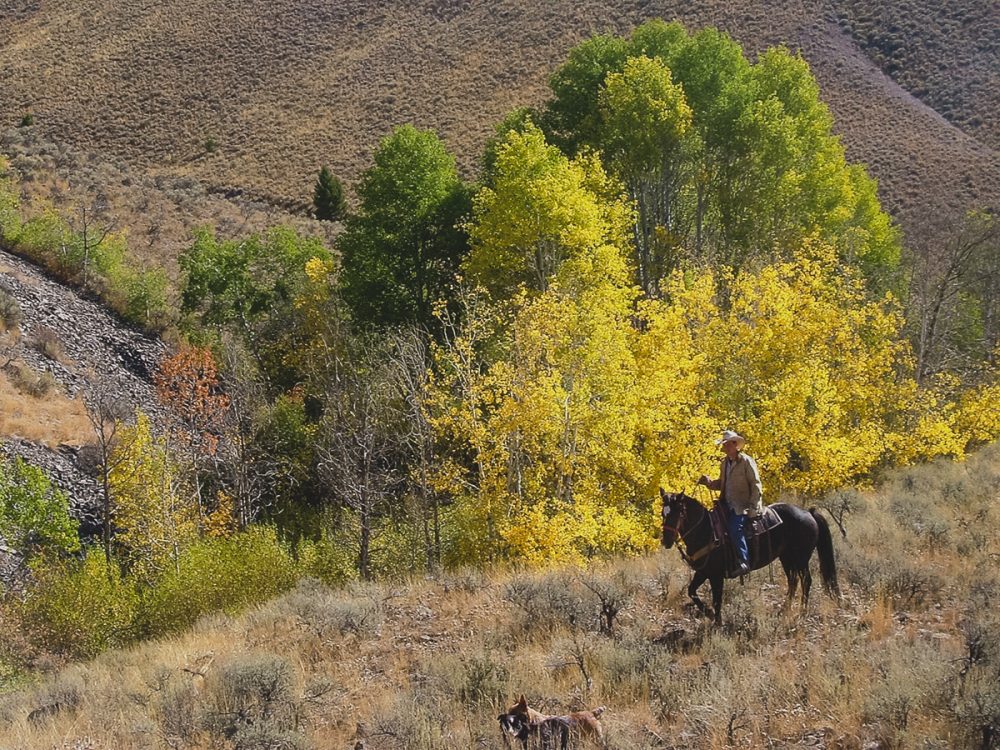
And on this blue-sky day, in the head of Park Creek, in 5 inches of snow and single digits in temperature, we were farther up and away as we could be. Our horse trailer where we parked that morning was nearly 12 miles away. We hadn’t cut a cow track all day, but we kept going because we had already ridden in all the more likely country in days previous.
So now, we were resorting to a piece of real estate that we saved for last.
We dropped down into the canyon proper after riding through usually whispering aspen glades, now silent and skeletal for the winter. It was a bleak juxtaposition to my memory of riding through these verdant forests teeming with life during the summer. Now, the woods were silent except for the occasional creak of a giant fir tree in the breezes that always cruised down canyon along the treetops. Even the rustle of leaves was hushed under our horse’s feet that shuffled through the powdery snow. The little game trail we were following dropped into the thick birches, spruce and willows along the creek. I had been dreading this crossing for most of the day.
We didn’t have our horses sharp shod. We still had plates on them, meaning that the shoes had no nubs or hardfaced “corks” on them (spelled caulks–don’t ask me why). These creek crossings can damage a horse’s bones and ligaments if they slip, as their steel shoes can become like ice skates underfoot. We’d have to be careful and easy.
The dogs, Arrow, Flash, Bamer and Gypsy-Dave picked their way gingerly from rock to rock across the frozen creek. My mare, Missy, balked at the thought of plodding over that ice, not only because she knew how hard it would be to keep her feet under her, but more so because she knew exactly what was hidden below it: a deep matrix of rocks and muck.
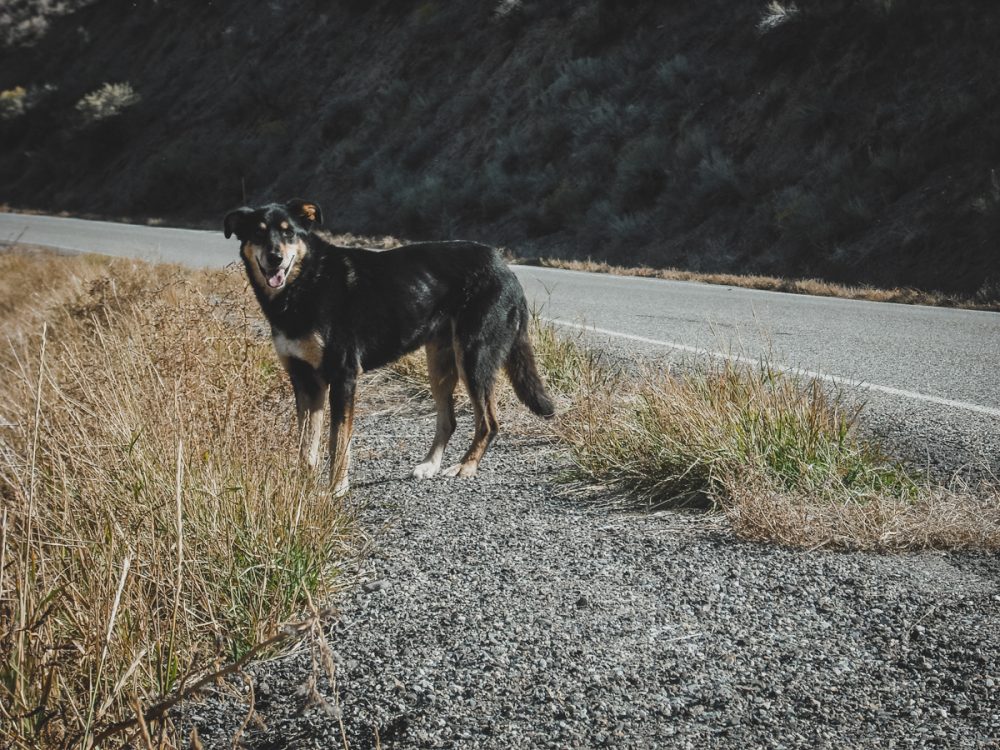
She had been with me through this remote crossing many times in the summer. It was the only place to pick our way across the creek. Elk, deer and bison had been crossing here for centuries and kept it open. Upstream there was too much brush, as the conifers and alders choked the creek full. Downstream, willows took over, and canyon walls narrowed down to where there was no approach horseback.
It was a low gradient part of the creek, and all the sediment had collected here. My hunch was that beavers had worked it as well, deepening the sediment flow of the volcanic ashy soils the creek found under its bed.
I had to get off. I’ve tried to ride her across before, and she wouldn’t do it. She would, I knew if I led her, so she could see where the bottom was on my feet. She was a mountain smart mare, and she knew the pitfalls. She was 20 years young already, and that is dang old for a horse to be packing the likes of my 215 pounds over the peaks and valleys, but she was a Morgan.
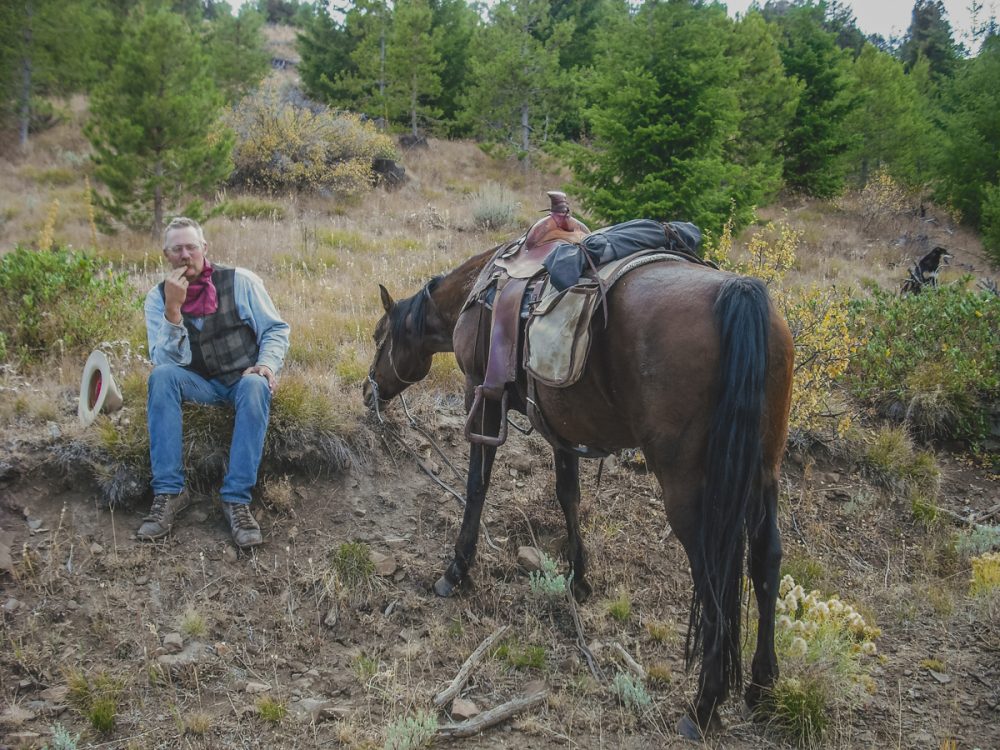
I personally think that Morgans have a certain amount of pride in their identity and are far too stubborn to quit until they’re 30.
So the way I figured it, she had plenty of miles under her yet. And sure enough, she did (she lived to 30 plus, and rode the ranges until 28). I jumped off, lightly grabbed the reins, and showed her by my moving ahead and purposely busting through the sketchy ice, where to go.
And she followed. A little tentatively, but indeed she came. I just let her pick her way. She went up to her hocks (halfway up her hind legs), but she never disappeared. And although I got inevitably muddy, my cowboy boots didn’t leak. Thank God for that. Otherwise, in our single number temps, my feet would have frozen hard, and we’d have to stop to build a fire and dry off.
April and Tim followed our lead and crossed without an issue. And now, it was behind us.
The trail wandered ahead, through powder snow and open fir trees. The tracks of elk, deer, coyote, fox and snowshoe hare crisscrossed along our way. The sun barely filtered through the thick fir foliage of the trees. It was far from overhead; the winter sun barely hit many of the canyon bottoms; most of them would never see it until March.
No cow tracks. At all.
And then in about another half mile, suddenly, the dogs, commanded and led by the irrepressible Arrow, nose held high, stopped in the middle of the trail. And listened. Their panting mouths intentionally closed as they stood, stock still. And the gentle downhill breeze caressed their nostrils. They flared them and tasted the air.
It was all it took. Straight up through the brush and forest they bolted. A cloud, a flare of powder wisped up behind them as they sprinted soundlessly as a canine pack straight up the fall line of hill.
It was all we could do to keep up, horseback, hooves thundering in the untrailed thicket of snow-covered fir trees.
We loped, we galloped as we could, upward, now not following dogs, but only their tracks. And then, we came on them, stopped. A big meadow opened up on the mountainside, and black cows and their calves stood, startled, in a Musk-Oxen defense array protecting their young from the pack of border-collie predators.
“Well, well.” I said to Tim.
“It looks like about all of them.” Indeed it was. It looked like about 20 pairs.
Because of a border collie.
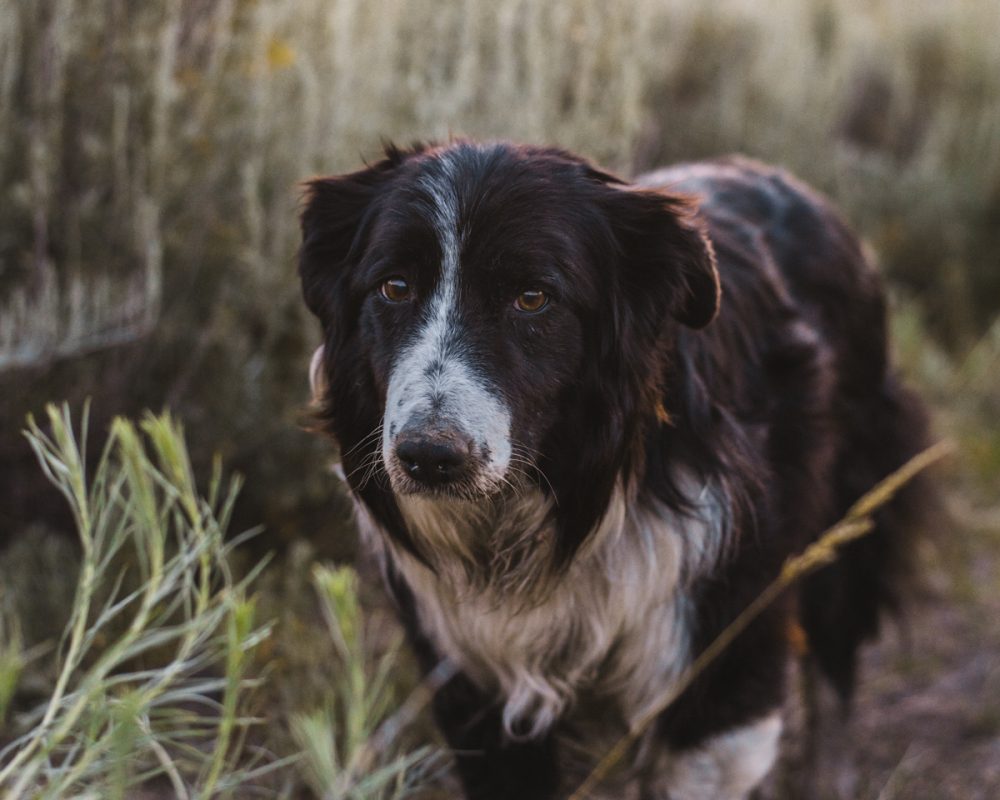
We would have never found them, if it hadn’t been for Arrow. The others were too young to know and were learning from her. She, I believe, knew what this foray into the cold, dark hinterlands was all about.
Earlier this week, Clyde and I alone gathered the nearly 500 head of yearlings from our pastures so that I could sort off 12 fat and finished beeves for shipping to our processor (we sort and ship beeves all year off of our pastures to ensure that our customers always get the freshest beef, and the remainder of Alderspring’s crew was at the fulfillment center doing just that).
I try to keep a tight reign on the guy, as he just turned a year ole. So, I speak to him, usually encouraging him, letting him know by my tone of voice just how much space to give a cow.
And then, I lost track of him in the tall grass. The brome was over 4 feet tall, and the cattle had balked on the trail up; about 200 head had lost focus and were thinking about turning back to the big meadows that they normally call home. I cussed Clyde under my breath. Dumb pup. He’d probably left on a trail of a jack rabbit or the like. I kind of needed him; otherwise, we would lose the whole herd.
I called out, but the wind got my words, and it was to no avail. I upped my pace to get to a little rise, and I could see the tail end of the herd, still about two hundred yards distant.
And then I noticed something. The cattle suddenly had picked up their pace. They were lining out in single and double file, starting about 100 feet from me. All of them had picked up their heads and had a renewed focus on moving forward. Could it be Clyde?
I peered as best I could at the very back. No. He wasn’t there. If a dog was pushing them, they would be like a string getting pushed instead of pulled. They would be piling up on each other. In addition, none of them were nervously looking back as if a dog was pushing them from the rear. They, instead, all seemingly on their own decision, were moving forward together in an orderly line.
And then I saw the telltale flick of a white tipped black tail in the tall grass. Clyde’s tail. About 10 feet away from the trail, the flank of moving cattle. He was moving along the cattle, opposite from their direction, toward the back of the herd, slowly, but certainly. If an individual in the line wasn’t moving, he would dart in just enough to stimulate movement, and then back off.
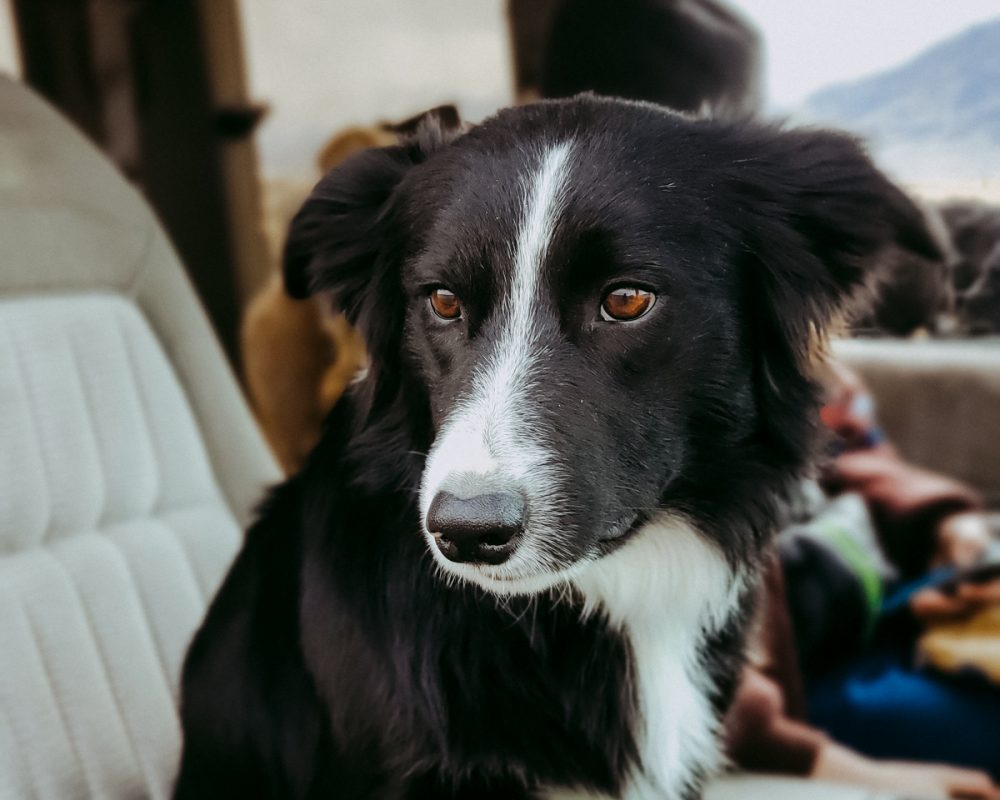
I was dumbfounded. Melanie and I had seen him exhibit this behavior before but couldn’t believe he knew what he was doing. And so we brushed it off to dumb luck. But now I was certain. He was doing exactly the right thing to facilitate movement by walking along the flank of the line in the opposite direction he wanted the cattle to go.
It was beautiful. I just stood silently and watched. He even had the subtle touch to change his body language in just such a way to stimulate continued flow with individuals stopping or slowing forward progress.
We spend entire summers trying to teach humans these aspects of bovine communication to facilitate movement. And some crew members never get it. They push the cattle. Any idiot can do that. But the cattle don’t flow when they are pushed. They are stressed.
But in the counter movement flanking that Clyde was doing, it was all release from pressure. The cattle wanted to move that way. Clyde wasn’t forcing them to move; he was simply making it perfectly easy for them to do the exactly right thing.
Unlike so many humans we have worked with, Clyde-dog, the 13 month old border, already came with the goods to create movement without stress. It was deep in his ancient genome, his blood, dating back hundreds of generations to black and white collies that lived and worked stock in the Medieval time on the abruptly rolling landscape between the fells of England and the highlands of Scotland.
Borderlands between the two would-be nations. And they, these canines of great worth, were border collies.
Clyde broke out of the tall grass, just as I caught up to him. Together, he and I gathered two or three more strays, and placed them in the now moving line of 500 head of Angus cattle, directionless no more.
I looked at him, as he looked up at boss.
“Well done, Clyde. That’ll do.”
His trademark black and white tipped tail slowly wagged as he panted in reply.
Indeed. That will do.
Happy trails.

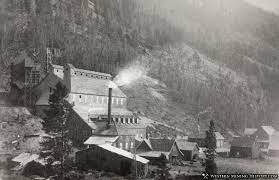

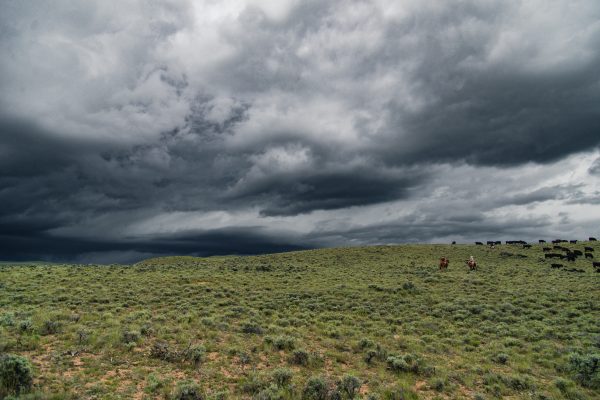
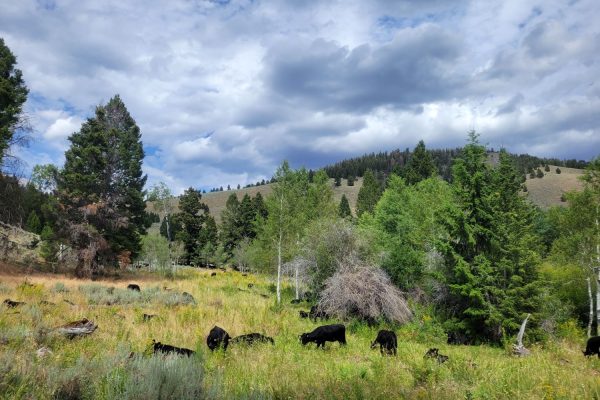
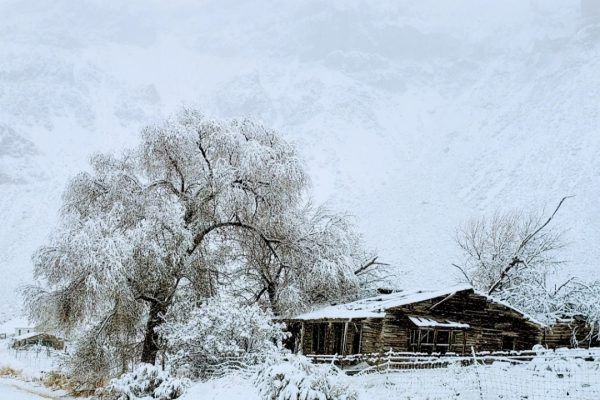

Patricia Boice
A fresh 2 inches of snow this morning down here in Idaho Falls. Not as chilly as Alderspring.
What a wonderful story to start my day. Thank you.
Cindy Salo
Good dog, Clyde! Great to hear he’s such a good pup.